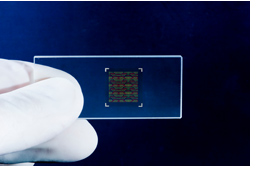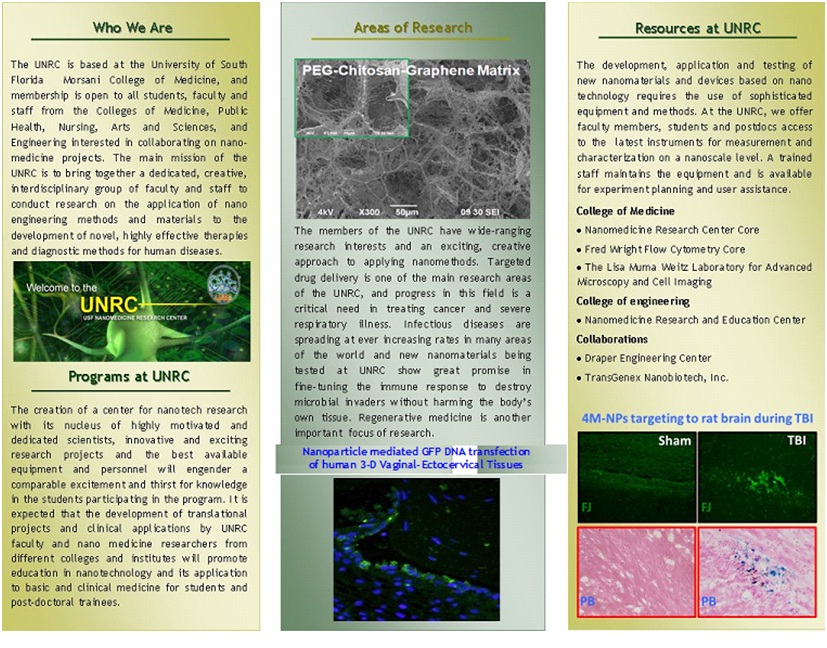USF Center for Research and Education in Nanobioengineering
Areas of Research

Nanomedicine
One of the main goals at the Center is the development of nanomedicine research with emphasis on fabrication and testing of ultrasensitive diagnostic devices and imaging methods for the earliest possible detection of diseases with the greatest accuracy. The application of nanomaterials and nanofabrication techniques to develop such devices and for the design and translation of cell-targeted delivery of drugs and genes is being pursued in collaboration with NNRC, the Draper Bioengineering Center and Transgenex Nanobiotech, Inc. The combined knowledge of the CREN researchers will be utilized in the selection of biomarkers, in microfluidic device fabrication, and in applying nanotechnology to the construction of biochips for remote monitoring of a patient’s condition. The Center’s research will also focus on the potential of cell-specific targeting and genetic modification of therapeutic cells using nanocomplexes formulated from proprietary biomaterials such as modified chitosan, PLGA and other biocompatible polymers.
Tissue Engineering
The architecture of human tissue is perfectly suited to its function. Bioengineers at CREN attempt to harness nanotechnology to create 3-dimensional copies of skin, bone, cartilage and other tissue types with special properties. Like the natural matrix in the human body, these engineered tissues support the growth of many types of cells. The 3-D structures can be created with built-in sensors, drug release modules, chemoattractants and other modifications and implanted into the body as a means to control disease or monitor therapies. Center scientists are exploring a wide variety of new materials and nano-and micro-fabrication methods to optimize these tissue constructs for use in treating cardiovascular disease, inflammatory conditions, neurodegenerative diseases and cancer.
Cell Technology
Center scientists have been investigating the use of umbilical cord blood stem cells and Sertoli cells for cell-based therapeutic applications to diseases such as Alzheimer’s, Parkinson’s, ALS, brain trauma, cardiomyopathies, and cancer. Prenatal gene therapy, stimulation and mobilization of bone marrow stem cells by the atrial natriuretic peptide pathway or with granulocyte colony stimulating factor and stem cell factor are also being investigated. The former is being studied in animal models of chronic lung disease and lung cancer, while the latter is being studied in animal models of neurodegenerative diseases and in traumatic brain injury. Additional research areas will seek to understand how embryonic stem cell differentiation is regulated and how this knowledge can be translated into novel cell therapies. Other investigators are pursuing research projects with direct relevance to Alzheimer’s disease and brain trauma and repair, involving monocytes or, ultimately, bone marrow stem cells as ferries for therapeutic genes. Yet another group is investigating abnormalities in the function and development of professional antigen presenting cells, or dendritic cells (DCs), the cellular and molecular mechanisms of T-cell suppression and tolerance induced because of abnormal differentiation of myeloid cells, and human testing of dendritic cell vaccines.

